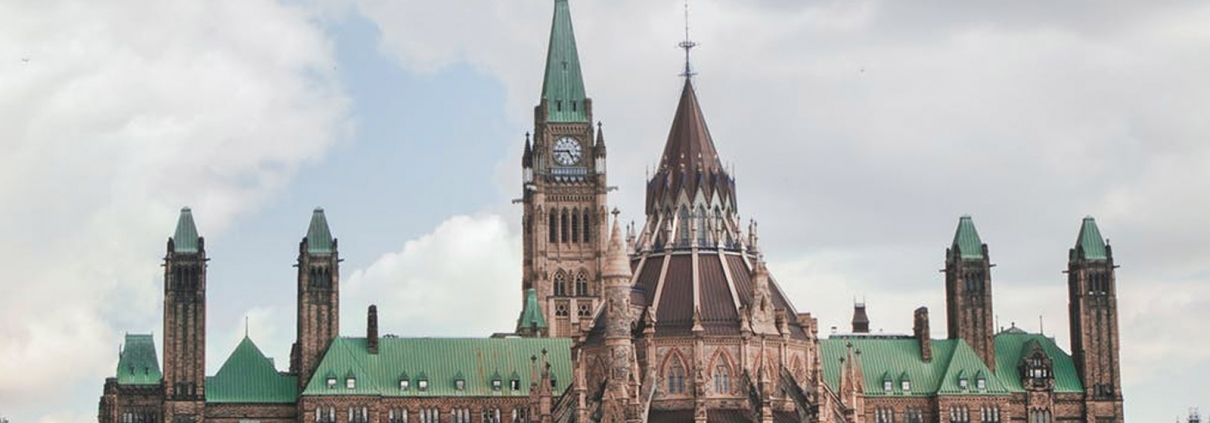Election 2019 Platform Comparison: How each party’s policies would impact your business
As Election 2019 grinds to a close and Canadians get set to choose their next prime minister, many voters are looking forward to seeing the back of an occasionally acrimonious but otherwise dull campaign. Still, this tight horserace has managed to sprinkle in a couple of surprises—a Liberal leader in brown face, a possible new Conservative PM who also happens to be an American.
Owners and executives at medium-sized firms across the country probably haven’t been surprised that the campaign has spent relatively little time focused on their interests, opting instead to address the demands of ‘hardworking middle-class families.’ The latter happen to be the demographic target of every vote-hungry federal political party, so they tend to consume the rhetorical oxygen in Ottawa these days.
To learn more about how the major parties would work to advance the interests of our hard-working entrepreneurs, we need to turn away from the largely sound bite-driven stump speeches and look instead at the costed platforms that each have put up for analysis. We should also add the caveat that few parties ever deliver their campaign promises in full, often seeking policy wiggle room the day after the polls close. So, take each one with a grain of salt.
Nevertheless, the platforms are an ideological window into the parties’ vision for the country. In this analysis, we’ve reviewed the platforms of the Liberal Party of Canada, the Conservative Party of Canada, the New Democratic Party and the Green Party. Despite their late campaign surge, we’ve excluded the Bloc Quebecois due to their regional focus, as well as Maxime Bernier’s upstart People’s Party of Canada due to the unlikelihood of it winning more than one seat in the election (if that). We’ve also focused only on the economic and fiscal policy content of each platform that’s most likely to impact your business.
Now, you’ll find that in true polite Canadian form, our political parties have a hard time disagreeing on much. In fact, in many cases their policies only differ around the margins. For example, all of the parties are promising to bring the knowledge economy revolution to rural areas with improved Internet access. The three left-leaning parties want to cut cellphone prices. It seems that some populist promises are, indeed, non-partisan.
The areas where they (mostly) differ are the ones that demand the bulk of business owner/operators’ attention. They include:
Small to medium-sized business growth
The Conservatives have promised to repeal Liberal tax reforms that, among other measures, clamped down on passive investment income generated by Canadian-controlled private corporations, and also partially reverse the overly complex measures dealing with the “tax on split income” specifically as they relate to splitting income with spouses. They would also reduce tax rates for green technology companies to 5 per cent from 15 per cent, and take steps to curb business regulation. Most notably, the Conservatives are the only party that have pledged to undertake a comprehensive, system wide review of the current tax system in an effort to make the system modern.
The Liberals are promising to help fund start-ups with cash grants, while also slashing corporate taxes for green companies making low-emission products. Like the NDP, they plan to do away with the often costly ‘swipe fees’ that merchants pay to credit companies with each credit card transaction. The Liberals have also pledged a limitation on interest expenses available to corporations. The NDP would cap those fees, while taking steps to level the tax playing field on the transfer of family businesses between generations. The details on the latter policy are fuzzy, to say the least. The NDP’s big pitch to the business community is a national pharmacare program that the party argues would dramatically reduce benefit costs for cash-strapped SMEs. The Greens are positioning as small business champions and want future federal governments to look at all legislation through an SME-friendly lens. Elizabeth May’s party is also offering to help start-ups with a new venture capital fund.
Climate change and the carbon tax
The Liberals made waves in some circles and enemies in others with their carbon pricing scheme, set at $20 per tonne in 2019, and scheduled to increase to $50 per tonne by 2022. They’ve attempted to ease the burden on consumers and some businesses through carbon tax rebates. If elected, the Conservatives are pledging to scrap carbon pricing altogether. They prefer to make investments in green technology and let the provinces decide whether they want to implement a carbon tax within their subnational borders. The NDP would keep the tax and potentially even increase it for the heaviest carbon emitters, but details of how that strategy would play out remain unclear. Elizabeth May’s Greens would maintain carbon pricing and strengthen emissions targets to align with pledges made by Ottawa when it signed on to the Paris Accord. They would also ban single-use plastics by 2022.
A strategy for manufacturing growth
The Liberals and Conservatives have been mostly mum on the manufacturing policy file, but the NDP says it would invest $300 million for innovation in the auto sector and is calling for a national strategy to develop a green manufacturing economy. The Green Party wants to turn Canada into a mass producer of environmentally-friendly technology and green energy infrastructure such as solar panels and wind turbines. They would also incentivize the production of electric vehicles.

Tax policy
Needless to say, the Greens’ promise to increase corporate taxes from 15 to 21 per cent likely won’t win them many friends in the business community. They would also slap a new tax on tech giants such as Facebook and Netflix. The Conservatives would also tax Big Tech to the tune of 3 per cent of their annual revenue. The Tories are pledging to cut taxes on income of less than $47,630 by 1.25 per cent over three years. Under their plan new parents would not be required to pay tax on employment insurance benefits. The NDP, on the other hand, wants to increase the capital gains inclusion rate to 75 per cent from 50 per cent, plans to increase the top federal personal income tax rate to 35 per cent from the current 33 per cent, and would tax wealthy Canadians with more than $20 million of wealth by implementing an annual 1% wealth tax based on all of the assets and liabilities of a Canadian resident “economic family”. Not surprisingly, they would also tax Big Tech. Lastly, the Liberals would tax luxury vehicles, raise the personal income tax deduction to $15,000 for anyone earning less than $147,000 and, yes, you guessed it, tax any big tech company doing business in Canada.
Final thoughts
Perhaps the most disappointing area where the parties have apparently agreed to agree is on deficit spending. Not one party is making serious commitments to bring our country’s precarious finances back into the black within a reasonable time frame. The Conservative promise to balance the budget will take five years and is by no means guaranteed. The possibility of a near-term recession could easily derail their projections. Back in 2015, the Liberals promised to achieve fiscal balance by 2019, and then reneged. Their current platform spending commitments would keep us in the red for the foreseeable future, with the deficit increasing to $27.4 billion by 2021. The NDP isn’t even setting a date for budgetary balance and wants to push the deficit to $32.7 billion in 2020. The Greens would achieve balance in five years like the Conservatives, but not before bumping the corporate tax rate to 21 per cent, imposing a wealth tax and a financial transactions tax.
Of course, we haven’t even mentioned the fact that the new US-Mexico-Canada Agreement (formerly NAFTA) hasn’t been ratified and is still a complete geopolitical wild card. President Trump could easily blow up the deal and throw our economy into disarray—and fiscal projections along with it.
Indeed, Canadian business owners will need to weigh their options carefully as they step into the polling booth on Monday. This has been a historically tight election and a minority government is entirely possible. At that point, all bets are off as to which campaign platform promises will be kept as the parties jockey for power.
Armando Iannuzzi, Partner


